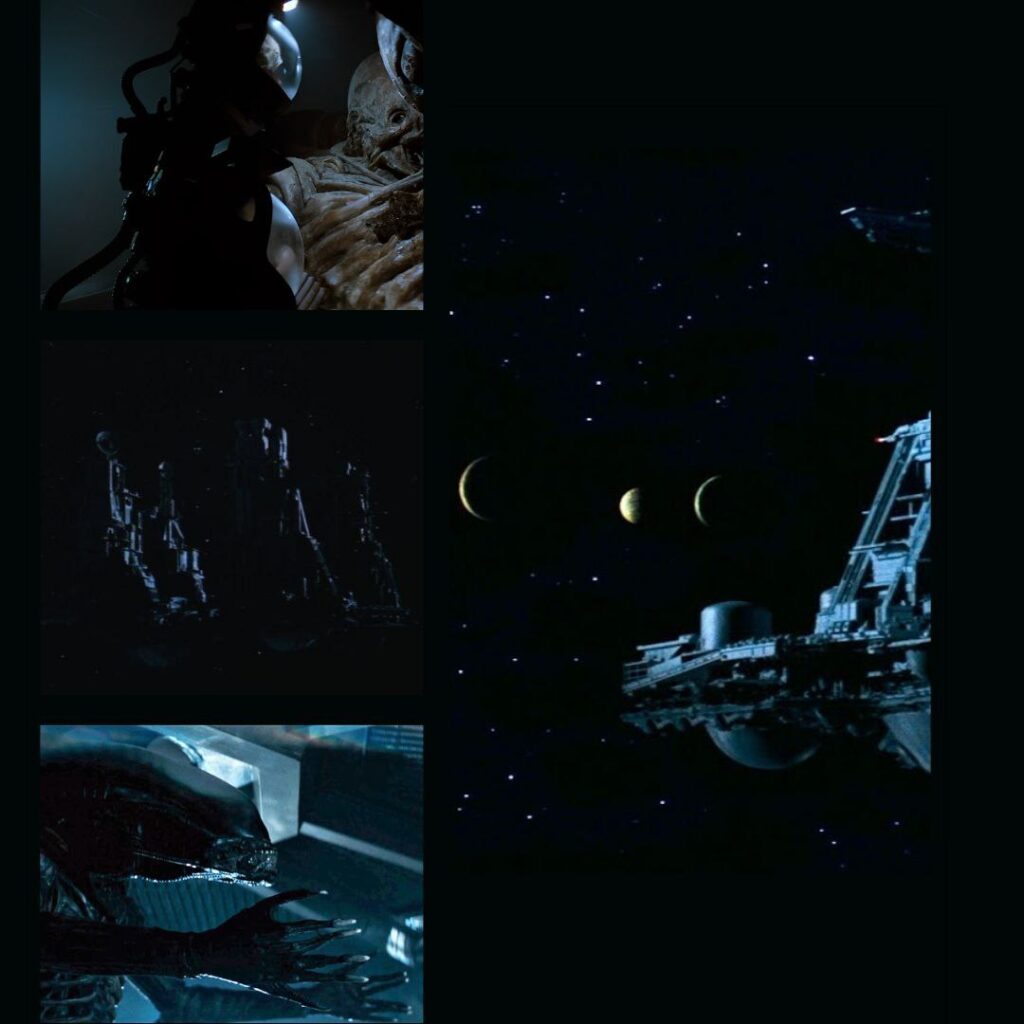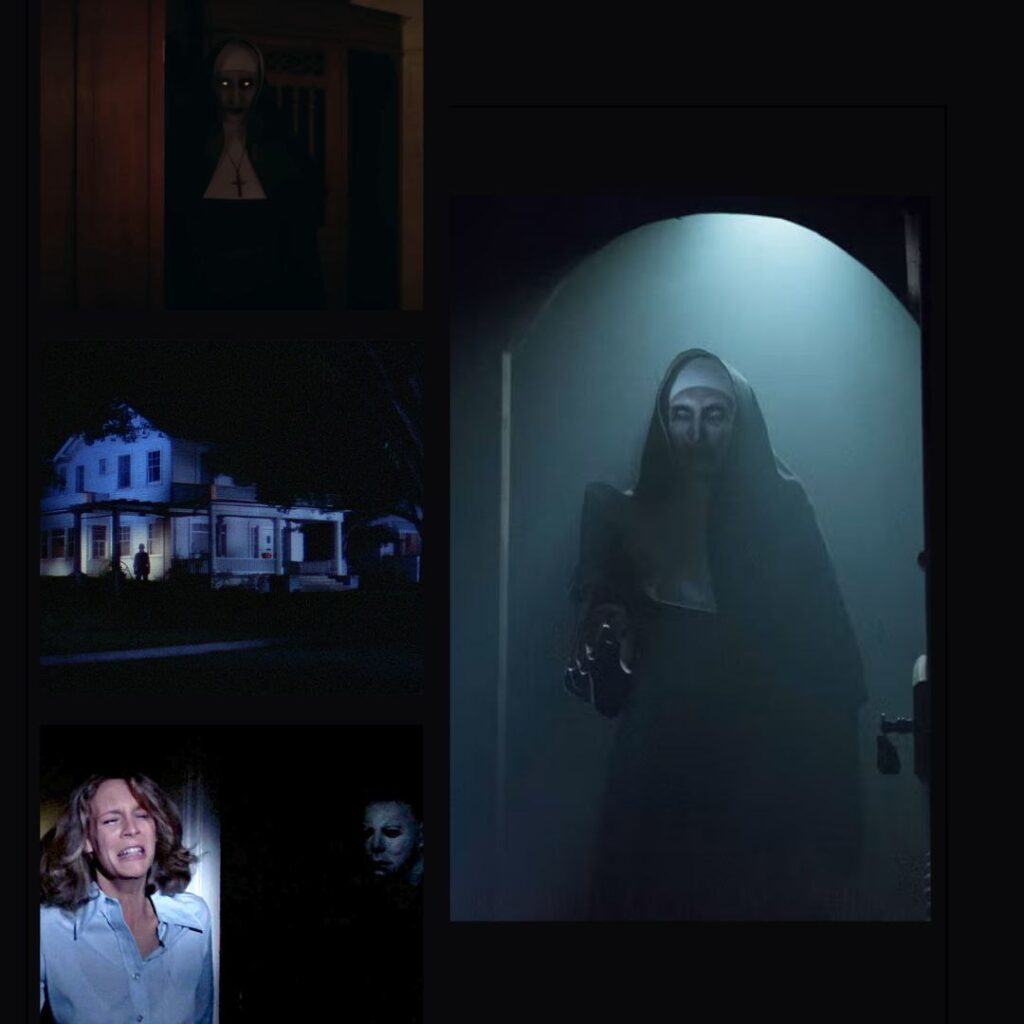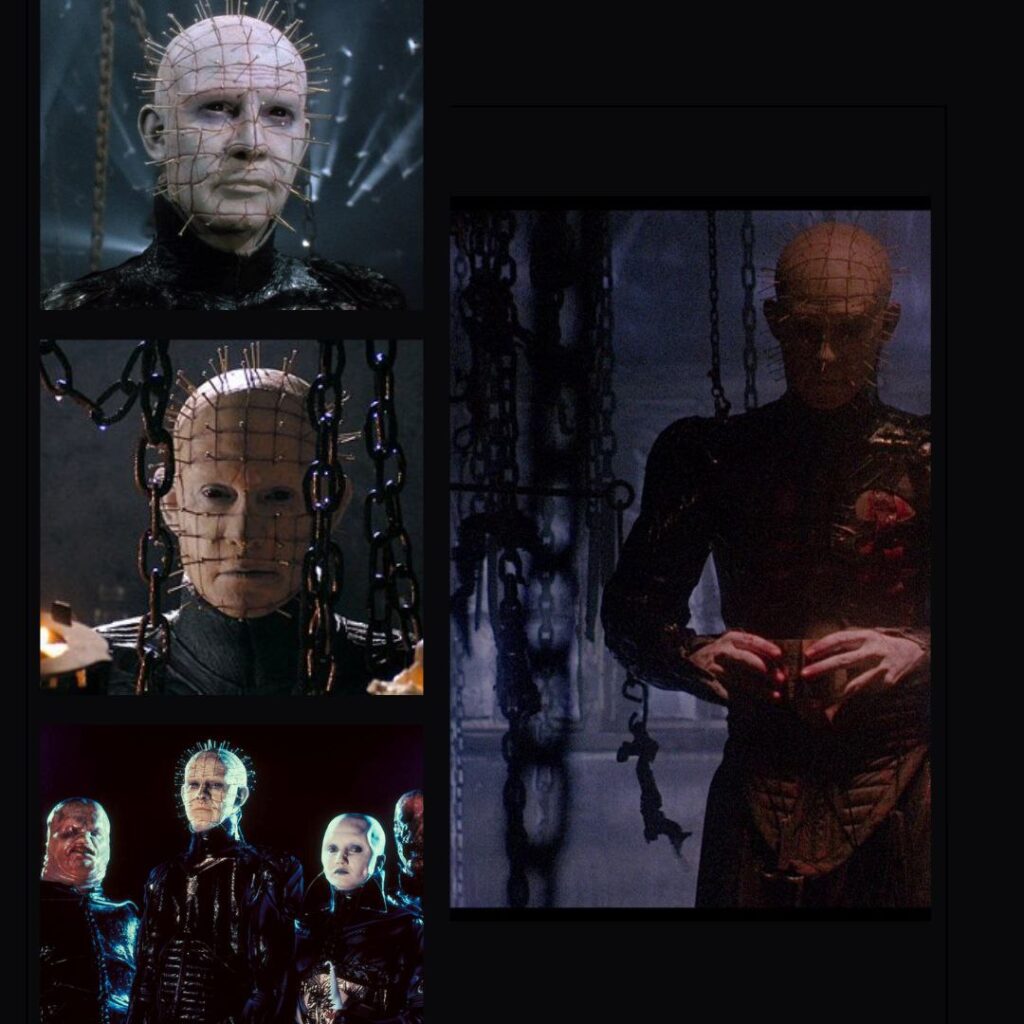Time to go really dark.
In this post for our ongoing series Colors From DarkWorlds, we’re diving into the most iconic horror color of them all: black. If red is the scream, black is the silence that follows. It’s the abyss. The unknown. The shadow in the corner that might be nothing… or might be the end of everything.
Black in horror doesn’t need an introduction — it’s everywhere. But its meanings go far beyond the obvious. From grief and madness to seduction and death, black is horror’s ultimate shape-shifter. So let’s pull back the veil and explore how filmmakers use black to scare us, move us, and drag us into the void.
Grief and Mourning
Black isn’t sadness — it’s sorrow.

Unlike the melancholic blues we associate with quiet depression, black in horror is used to express a deeper, more consuming grief — one that swallows characters whole.
In The Babadook, the creature itself is the embodiment of grief. While the home is saturated in cold blues, the Babadook is pitch-black — not just in look, but in essence. It’s a manifestation of unprocessed mourning, and its shadow spreads as the protagonist sinks further into despair.
In The Woman in the Yard, the black-clad figure haunting the courtyard isn’t just a ghost — it’s a visual metaphor for the main character’s depression and suicidal ideation. Her presence is quiet, constant, and terrifying in its stillness. In these stories, black doesn’t kill. It remains — an inescapable weight pressing down on the soul.
The Unknown, the Void, the Darkness
Black is the absence of light, of color, of understanding.
In horror, black often represents the unknown — that liminal space between sanity and madness, life and death, or this world and the next. In Get Out, when Chris is hypnotized, his mind is sent to the Sunken Place — a vast black void, terrifying in its silence and helplessness.
In Alien, the Nostromo is surrounded by the endless black of space, and the xenomorph itself — slick, black, and eyeless — becomes one with the shadows. You can’t fight what you can’t see. Black hides the enemy — and sometimes, it is the enemy.
Death, Evil, and the Inescapable End

Black is the color of finality — and the final act.
Horror’s most iconic killers? They love the dark. Michael Myers, Valak the Nun, Leatherface — all wrapped in black or emerging from the pitch-dark to claim their victims.
In Hereditary, death hides in the corners — literally. Figures linger in shadowy frames, barely visible but unmistakably there. The blackness becomes a character of its own, a silent harbinger of doom.
Lights Out takes it a step further: the creature only exists in darkness. You flick the switch, it disappears. You turn it off — and it’s already right next to you. Black isn’t just a background — it’s a threat.
Bad Omens and Curses
Black is also a signal — one of warning and dread.
In The Woman in Black, the titular ghost appears in mourning attire. Every time she’s seen, a child dies. She doesn’t scream, doesn’t chase — she simply appears, dressed in black, and fate does the rest. The color itself becomes a curse.
Other dark messengers? Think of the black dog in The Omen, or the crow in The Crow, or the black cat in Ju-On (The Grudge). These creatures aren’t inherently evil, but they’re signposts — if they show up, you probably won’t be sticking around for the sequel.
Forbidden Desire and the Allure of Pain

Black doesn’t just represent evil — sometimes it’s sexy. Dangerous. Erotic.
In Hellraiser, the cenobites are clad in leather and chains, evoking the aesthetics of BDSM and the blurred line between pleasure and pain. Their world is black: slick, cold, seductive. You can’t tell if it’s heaven or hell — and they like it that way.
Black here symbolizes taboo and transformation. Once you cross the line, there’s no going back. Pain is pleasure. Curiosity is destruction. And the color of both? Always black.
In The Substance, a shadowy frame of a mysterious phone call feels lifted straight out of Lost Highway — another Lynchian nightmare where black becomes the visual language of mystery, deception, and identity loss.
Witchcraft and Dark Magic
Where there are witches, there is black.
In Gretel & Hansel, the witch’s house is unnaturally black, absorbing light like a void in the forest. Her fingers are stained like they’ve been dipped in ink — a recurring visual shorthand for witchcraft throughout horror cinema.
The color black doesn’t just symbolize the supernatural — it embodies the cost of wielding dark power. And it’s not always reversible. At the end of Gretel & Hansel, Gretel defeats the witch… but her own fingers begin to turn black. She wants to be a good witch — but power always demands a price. And black is the ink in that contract.
Final Thoughts: Black Is the Genre
In horror, black is more than color — it’s an environment, an emotion, a force. It is where horror lives and where characters go to die (or transform… or return as something worse).
It is grief. It is danger. It is the unknown. It is desire.
It is horror’s oldest ally — and its most terrifying mask.
So the next time you see a black shadow on the wall, or a figure standing in a pitch-black doorway… don’t just ask what it is.
Ask what it means.
Because in horror, black never shows up without a reason.
